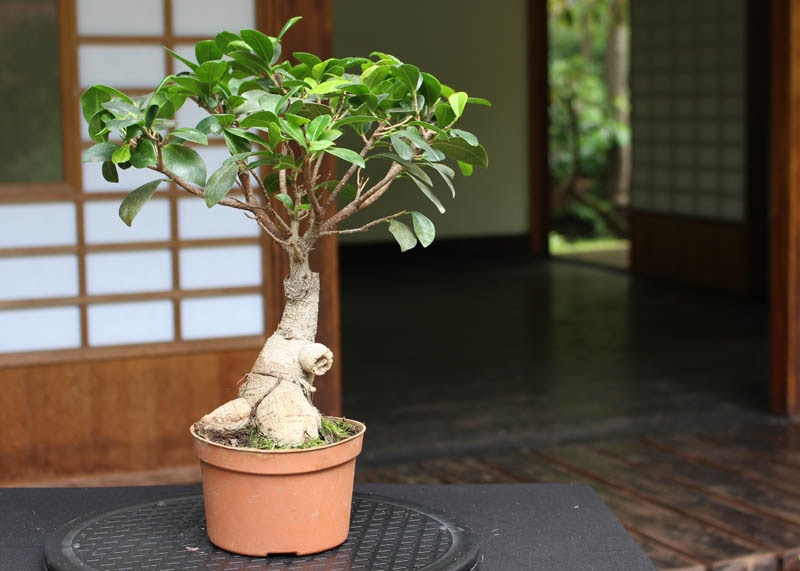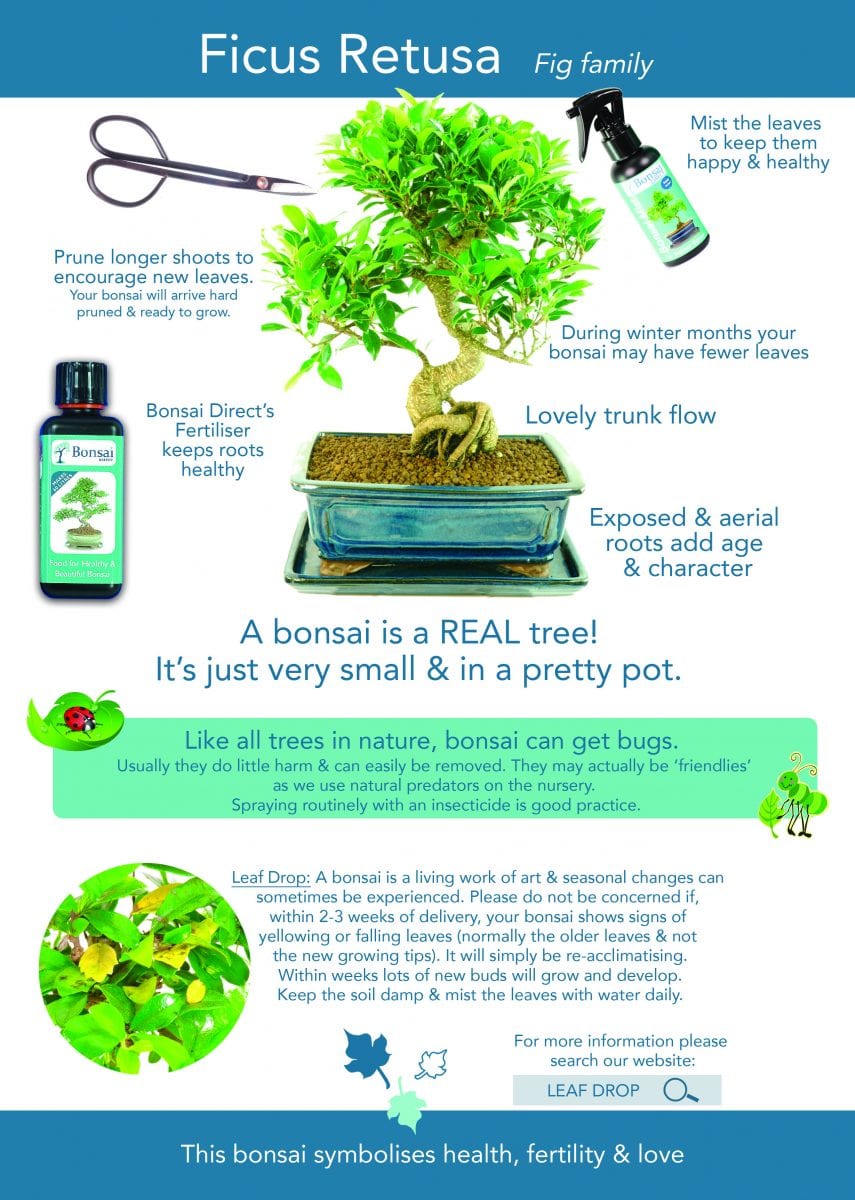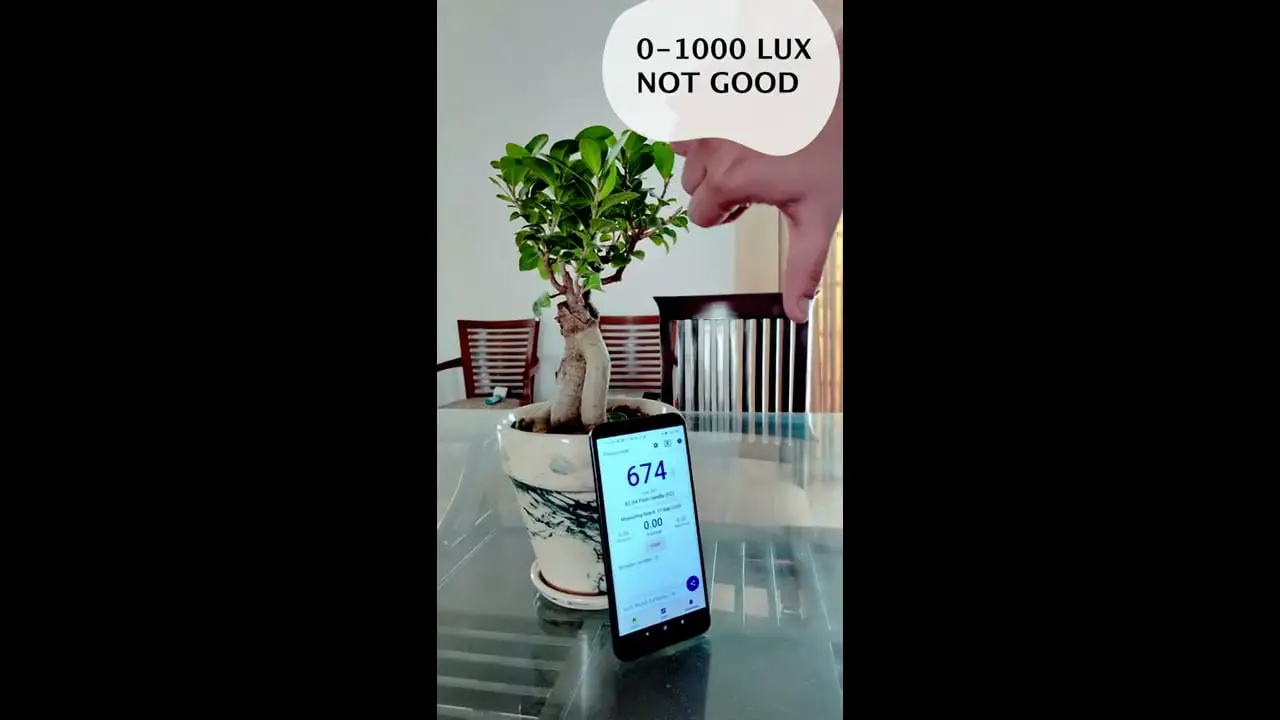So you’ve got yourself a ficus bonsai tree and now you’re wondering how to take care of it? Well, you’ve come to the right place. In this article, I’ll be sharing with you all the tips and tricks to ensure your ficus bonsai tree thrives and stays healthy. From watering techniques to pruning methods, I’ve got you covered. Whether you’re a beginner or an experienced bonsai enthusiast, this article is for you. So grab your gardening tools and let’s get started on this bonsai care journey together.
Caring for a Ficus Bonsai Tree
If you’re looking to care for a ficus bonsai tree, you’ve come to the right place. In this comprehensive guide, I will walk you through the necessary steps and techniques to ensure that your ficus bonsai tree thrives. Ficus bonsai trees are a popular choice among bonsai enthusiasts due to their beautiful foliage and overall resilience. By following these guidelines, you will be able to enjoy the beauty of your ficus bonsai tree for years to come.

Lighting
Indoor Lighting
Proper lighting is crucial for the health and growth of your ficus bonsai tree. Ideally, your tree should be placed near a window where it can receive ample indirect sunlight. Ficus bonsai trees thrive in bright, but not direct, light. If your indoor space lacks natural light, you can supplement it with artificial lighting.
Outdoor Lighting
If you choose to place your ficus bonsai tree outdoors, make sure to find a spot that provides a balance of sunlight and shade. Too much direct sunlight can harm the tree, while insufficient light can prevent healthy growth. It’s essential to monitor the light conditions your ficus bonsai tree receives and adjust its placement accordingly.
Placement
When deciding where to place your bonsai tree, there are a few factors to consider. Firstly, ensure that it’s placed in an area with consistent temperature and humidity levels. Avoid placing it near drafty windows, air conditioning vents, or radiators, as sudden temperature fluctuations can stress the tree. Additionally, keep your bonsai tree away from strong winds, as they can damage the delicate branches.
Artificial Lighting
If you’re growing your ficus bonsai tree indoors or in a location without adequate natural light, artificial lighting can be a great solution. LED grow lights are a popular choice as they provide the specific spectrum of light that plants need for photosynthesis. Place the lights close to the bonsai tree, ensuring they cover the entire canopy evenly. Keep the lights on for 10-12 hours a day to supplement the lack of natural light effectively.
Watering
Frequency
Proper watering is key to maintaining the health of your ficus bonsai tree. The frequency of watering depends on various factors, including the season, pot size, and environmental conditions. As a general rule, water your ficus bonsai when the top inch of soil feels dry. Remember, it’s better to slightly underwater than to overwater, as ficus trees are susceptible to root rot.
Watering Techniques
To water your ficus bonsai tree thoroughly, immerse the pot in a container of water for a few minutes. This will allow the soil to absorb moisture, ensuring the roots receive adequate hydration. Afterward, allow the excess water to drain away completely before returning the bonsai to its display location.
Drainage
Proper drainage is crucial for the health of your ficus bonsai tree. Ensure that the pot has sufficient drainage holes to allow excess water to escape. Consider using a well-draining bonsai soil mix, such as a combination of akadama, pumice, and lava rock, to promote proper drainage. Avoid using regular garden soil, as it retains too much water and can lead to root rot.
Humidity
Ficus bonsai trees thrive in humid environments. To maintain the necessary humidity, you can mist the foliage regularly or use a humidity tray. A humidity tray is a shallow dish filled with water and pebbles. The bonsai pot sits on top of the pebbles, allowing water to evaporate and create a humid microclimate around the tree. Monitor the humidity levels and adjust as necessary to keep your ficus bonsai tree happy and healthy.
Feeding
Fertilizer Selection
Proper fertilization is essential for the growth and vitality of your ficus bonsai tree. Choose a well-balanced, slow-release bonsai fertilizer or an organic option. Look for a fertilizer with a ratio of approximately 10-10-10 or 14-14-14, as this will provide a good balance of essential nutrients.
Feeding Schedule
During the growing season, which typically spans from spring to early fall, fertilize your ficus bonsai tree every two weeks. Follow the recommended dosage provided by the fertilizer manufacturer. In winter, reduce the frequency to once every 4-6 weeks, as the tree’s growth slows down.
Organic vs. Synthetic Fertilizer
Both organic and synthetic fertilizers have their benefits. Organic fertilizers, such as fish emulsion or seaweed extract, provide slow-releasing nutrients and improve the overall soil quality. On the other hand, synthetic fertilizers allow for more precise nutrient control and faster results. Ultimately, the choice between organic and synthetic fertilizers depends on personal preference and the specific needs of your ficus bonsai tree.
Nutrient Deficiencies
Keep an eye out for signs of nutrient deficiencies in your ficus bonsai tree. Yellowing leaves, stunted growth, or leaf drop can indicate a lack of essential nutrients. If you notice any of these symptoms, adjust your fertilization routine accordingly. However, be cautious not to over-fertilize, as this can lead to nutrient burn and cause further damage to the tree.
Temperature and Climate
Ideal Temperature
Ficus bonsai trees prefer a warm climate with temperatures ranging between 60°F and 75°F (15°C to 24°C). They can tolerate slightly lower temperatures during the winter dormancy period, but prolonged exposure to frost or extreme cold can be detrimental.
Cold Protection
If you live in an area with cold winters, it’s important to protect your ficus bonsai tree from freezing temperatures. Move the tree indoors or to a sheltered location, such as a garage or basement, when temperatures drop below freezing. You can also wrap the pot in insulation material or use a frost blanket to provide additional protection.
Heat Protection
During hot summer months, when temperatures rise above 90°F (32°C), your ficus bonsai tree may require extra care. Ensure that the tree is placed in a shaded area to protect it from direct sunlight, which can scorch the leaves. Mist the foliage regularly to provide some relief from the heat and maintain proper humidity levels.
Climate Considerations
When choosing a ficus bonsai tree, consider the climate of your region. Ficus benjamina, also known as the weeping fig, is more suitable for warmer climates, while Ficus microcarpa, or the Chinese banyan tree, is more cold-hardy. Select a ficus variety that is better adapted to your local climate to ensure a successful and thriving bonsai tree.

Pruning and Shaping
Tools Required
To properly prune and shape your ficus bonsai tree, you will need a few basic tools. These include concave branch cutters, sharp pruning shears, wire cutters, and bonsai wire. These tools will allow you to trim branches, shape the foliage, and wire the tree to create the desired form.
Pruning Techniques
Regular pruning is necessary to maintain the shape and overall health of your ficus bonsai tree. Begin by removing any dead, damaged, or diseased branches. Then, selectively prune branches to maintain the desired silhouette and promote a balanced structure. Prune during the tree’s growing season to encourage new growth.
Shaping and Wiring
Wiring is an essential technique for shaping bonsai trees. Before wiring, ensure that the branches are flexible enough to bend without breaking. Wrap the bonsai wire around the branch, starting from the base and working towards the tip. Gently shape the branch into the desired position, taking care not to damage the bark. Remove the wire after a few months to prevent it from cutting into the bark.
Maintenance Pruning
Regular maintenance pruning is vital to keep your ficus bonsai tree looking its best. Remove any excessive growth that disrupts the overall shape and symmetry. Additionally, periodically check for signs of pests or diseases during pruning sessions to catch any issues early on.
Repotting
When to Repot
Ficus bonsai trees generally need to be repotted every two to three years. Signs that your tree needs repotting include roots growing out of the drainage holes, the soil becoming compacted, or slow growth despite proper care. The best time to repot is during early spring before new growth starts.
Choosing the Right Soil
Selecting the right soil is crucial for the health of your ficus bonsai tree. A well-draining bonsai soil mix is recommended, preferably a combination of akadama, pumice, and lava rock. This mixture provides good aeration, proper drainage, and allows the roots to access necessary nutrients.
Repotting Steps
To repot your ficus bonsai tree, begin by carefully removing it from the current pot. Gently loosen the root ball and remove any old or tangled roots. Trim back long roots and spread out the remaining roots to promote healthy growth. Place the tree in the new pot, filling in the gaps with fresh bonsai soil mix. Water thoroughly to settle the soil and hydrate the roots.
Root Pruning
During repotting, it’s common to perform root pruning to ensure the overall health and development of the ficus bonsai tree. Use sharp pruning shears or root pruning shears to trim the roots. Remove any overly thick or tangled roots, focusing on maintaining a balanced root system. Remember to prune no more than a third of the root mass to avoid placing stress on the tree.

Pests and Diseases
Common Pests
While ficus bonsai trees are generally hardy, they can still fall victim to common pests. Watch out for aphids, scale insects, spider mites, and mealybugs. These pests can cause damage to the leaves and weaken the tree if left untreated.
Signs of Infestation
Signs of pest infestation include yellowing or wilting leaves, sticky residue on the foliage, small webs, or the presence of small insects. Regularly inspect your ficus bonsai tree for any signs of pest activity to catch and treat infestations early.
Treatment Options
To eradicate pests, you can use various treatment options. These include insecticidal soaps, neem oil, or horticultural oils. Follow the instructions on the product label and ensure thorough coverage of the affected areas. Repeat the treatment as necessary until the pests are completely eliminated.
Preventive Measures
To prevent pest infestations, ensure that your ficus bonsai tree is in good health and free from stress. Maintain proper watering, lighting, and fertilization practices to build a strong, resistant tree. Regularly clean the foliage to remove dust and debris, as pests are often attracted to dirty and weakened plants.
Winter Care
Winter Dormancy
Ficus bonsai trees experience a period of dormancy during winter. During this time, the growth slows down, and the tree requires less water and nutrients. Adjust your care routine accordingly to support the tree’s natural dormancy cycle.
Protecting the Tree
To protect your ficus bonsai tree from chilly winter weather, move it to a sheltered location such as a garage or a basement. Ensure that the tree is away from cold drafts and frost-prone areas. You can also insulate the pot with materials such as bubble wrap or straw to provide additional protection.
Reducing Watering
During winter dormancy, ficus bonsai trees require less frequent watering. Allow the soil to dry out slightly between waterings and avoid overwatering, as this can lead to root rot. Monitor the moisture levels by checking the top inch of soil. If it feels dry, it’s time to water again.
Maintaining Humidity
To maintain proper humidity levels during winter, mist the foliage occasionally or use a humidifier in the vicinity of the ficus bonsai tree. This will help prevent the leaves from drying out and maintain the necessary moisture levels for healthy growth.

Training and Styling
Bonsai Styles
There are several bonsai styles you can explore when training your ficus bonsai tree. These include formal upright, informal upright, slanting, cascade, and windswept, to name a few. Choose a style that suits the characteristics of your ficus bonsai tree and your personal aesthetic preferences.
Wiring Techniques
Wiring is a technique used to shape the branches and create movement in bonsai trees. Wrap bonsai wire around the branches, starting from the base and working toward the tips. Gently bend the branches into the desired position, taking care not to damage the bark. Leave the wire in place for a few months to set the shape, then remove it to prevent it from cutting into the bark.
Choosing the Right Branch Structure
When training your ficus bonsai tree, pay attention to the branch structure. Aim for a balanced distribution of branches, with varying heights and lengths. Select branches that have a slight upward angle, as this gives the tree a natural and aesthetic look.
Creating Movement and Balance
Movement and balance are vital elements of a well-styled bonsai tree. When shaping your ficus bonsai, consider the flow of branches and the overall structure. Introduce gentle curves and angles to create interest and a sense of movement. Additionally, ensure that the foliage is evenly distributed to maintain balance throughout the tree.
Common Mistakes
Overwatering
One of the most common mistakes in bonsai care is overwatering. Ficus bonsai trees prefer slightly dry conditions, so it’s important to let the soil dry out between waterings. Overwatering can lead to root rot, which can be detrimental to the health of the tree. Remember, it’s better to underwater than to overwater your ficus bonsai.
Underwatering
While ficus bonsai trees don’t like excessive moisture, underwatering can also be problematic. It can cause the tree to become dehydrated, leading to wilted leaves and stunted growth. Strike a balance and ensure that your bonsai tree receives adequate hydration without overdoing it.
Improper Lighting
Proper lighting is crucial for the health and growth of a ficus bonsai tree. Too much direct sunlight can scorch the leaves, while insufficient light can lead to pale and weak growth. Find the right balance of light for your specific bonsai tree and adjust its placement accordingly.
Neglecting Fertilization
Fertilization is essential for the overall health and vitality of your ficus bonsai tree. Neglecting to fertilize can result in nutrient deficiencies, stunted growth, and weakened trees. Follow a consistent feeding schedule, choosing the appropriate fertilizer, and providing the necessary nutrients your tree requires.
Caring for a ficus bonsai tree can be a rewarding and fulfilling experience. By understanding and implementing the proper techniques for lighting, watering, feeding, temperature and climate considerations, pruning and shaping, repotting, pest and disease prevention, winter care, training and styling, and avoiding common mistakes, you can ensure the long-term health and beauty of your ficus bonsai tree. Remember to observe and respond to your tree’s individual needs as you embark on this journey as a bonsai enthusiast. Happy growing!

The Best-Kept Secrets of Ficus Bonsai Success: Tips and Tricks Revealed


